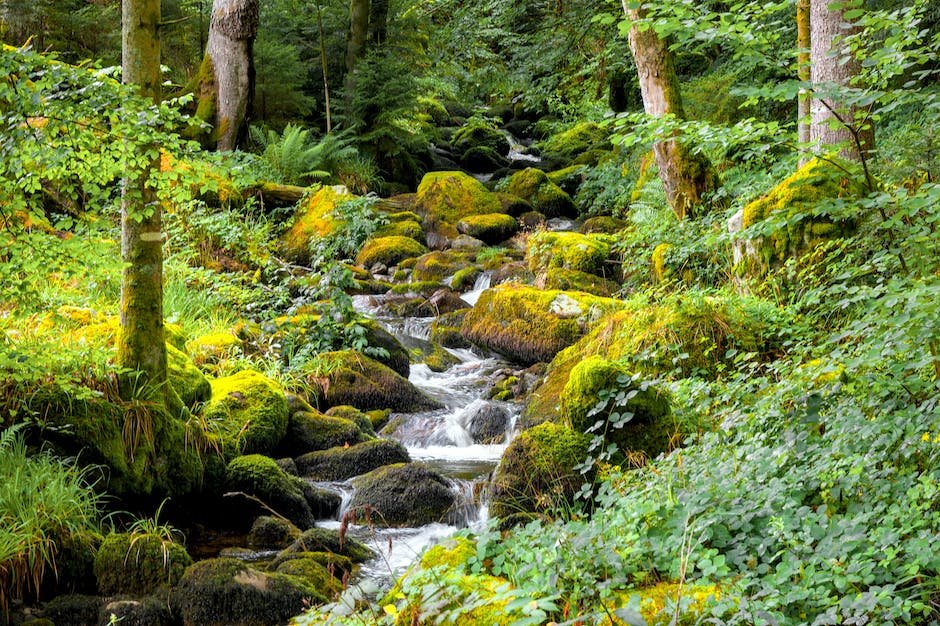Now Reading: The Art of Tracking: Identifying Animal Signs
-
01
The Art of Tracking: Identifying Animal Signs
The Art of Tracking: Identifying Animal Signs
Stepping into the wilderness is like discovering an invisible puzzle that nature has crafted for us. Among the towering trees, grassy meadows, and babbling streams, a silent language is spoken—one that many overlook, but a handful of expert observers learn to decipher. It is the ancient art of tracking, the ability to unlock the mysteries of the wild by identifying the subtle signs left behind by its elusive inhabitants. Much more than just footprints in the dirt, these signs are like fragments of an animal’s story, whispered through imprints, scents, and traces. So, let us embark on a journey, where we will delve into the captivating world of animal tracking, unveiling the secrets hidden in plain sight and unlocking the door to a realm where nature’s whispers become our guide.
Table of Contents
- The Language of Nature: Decoding Animal Signs in the Wild
- Mastering the Art of Observation: Techniques to Identify Animal Tracks
- Beyond the Footprints: Unveiling Clues About Animal Behavior through Scat Analysis
- Spotting the Invisible: Identifying Animal Signatures in the Forest Canopy
- The Detective’s Toolkit: Essential Gear for Successful Animal Tracking
- Q&A
- To Conclude

The Language of Nature: Decoding Animal Signs in the Wild
When wandering through the mysterious realm of nature, one cannot help but wonder about the intricate language spoken by the creatures that call it home. From the mighty forests to the vast savannahs, animals communicate through a complex network of signs and signals, revealing their intentions, emotions, and even warnings. Decoding these messages not only provides a deeper understanding of wildlife, but also unlocks a world of hidden connections and profound insights.
Observing behavior:
Animal signs can manifest in various ways, shape, and form. By carefully observing their behavior, we can unravel the mysteries hidden within. Pay attention to their body language – a raised trunk, fluffed feathers, or a wagging tail can speak volumes about their mood. Track their movements and listen to their calls, deciphering the messages encoded within their unique vocalizations. Some may even leave markings or scents behind, signaling territory boundaries or attracting potential mates.
Reading the landscape:
Nature is art in motion, and the landscape itself can hold valuable clues about its inhabitants. Look for tracks on the forest floor, imprints in the sand, or scratched tree barks, all fragments of the language of nature. These signs can unveil the presence and habits of elusive species, guiding us quietly through the secrets of the wild. Hidden messages are etched into the very fabric of the Earth, waiting for those curious enough to seek them out.
Understanding the interconnectedness:
Decoding animal signs goes beyond individual communication. It allows us to appreciate the delicate balance and interconnectedness of ecosystems. A toppled tree may signify the foraging of a bear, which, in turn, disperses seeds across the forest. Through observation and understanding, we become participants in the awe-inspiring dance of nature, realizing that every sign tells a story and every action has a consequence.
Unlocking the language of nature allows us to come closer to our wild counterparts, fostering empathy, and revealing the beauty that lies beneath the surface. So, venture forth, with eyes wide open and ears attuned to the symphony of the natural world, and embark on a journey to decode the intricate messages whispered by animals all around us.

Mastering the Art of Observation: Techniques to Identify Animal Tracks
Observing animal tracks can be an exciting and rewarding experience for nature enthusiasts. By understanding the techniques used to identify these tracks, you can unlock a whole new world of knowledge about the wildlife around you. Here are some tips to help you master the art of observation and become a track detective!
1. Pay Attention to Size and Shape
When analyzing animal tracks, size matters! Take note of the length, width, and overall shape of the print. Large tracks could indicate the presence of a bigger animal, while smaller ones might belong to smaller creatures. Additionally, observing the outline of the track can provide clues about the animal’s anatomy and walking pattern.
2. Identify Distinctive Claw or Toe Patterns
The details lie in the toes and claws! Different animals have unique foot structures, bearing distinctive claw or toe patterns. Pay attention to the number, arrangement, and shape of toes to narrow down potential species. The presence of claw marks can also indicate whether an animal is a predator or prey.
3. Look for Other Signs in the Surrounding Area
Animal tracks rarely exist in isolation. They often leave behind other signs and clues in their surrounding environment. Keep an eye out for other hints like scat, feathers, fur, or chewed plants. These additional indicators can provide a more comprehensive understanding of the animal’s behavior and habitat.
4. Use Field Guides or Online Resources
When encountering unfamiliar tracks, it’s always helpful to consult field guides or reliable online resources. These references can offer valuable information about local wildlife, aiding in the identification process. Take advantage of illustrations, photographs, and detailed descriptions to compare and pinpoint the animal responsible for the track you’ve discovered.
By honing your observation skills and utilizing these techniques, you’ll soon become an expert at identifying animal tracks. Get out into nature, explore, and enjoy uncovering the hidden stories left behind by our furry and feathered friends!

Beyond the Footprints: Unveiling Clues About Animal Behavior through Scat Analysis
When it comes to understanding animal behavior, researchers have discovered an invaluable treasure trove of information hidden in the most unlikely places – animal scat! While footprints can provide some insight into an animal’s presence, scat analysis offers a far more detailed and comprehensive understanding of their behavior.
Scat, or animal droppings, is a fascinating medium that contains a wealth of data about an animal’s diet, health, and even territory marking. By studying the composition, size, and shape of scat, experts can determine an animal’s species, sex, and age, as well as the types of food it consumes. This information helps researchers piece together the intricate puzzle of an animal’s daily routines, social interactions, and overall ecological role.
- Scat analysis provides crucial insights into the behavioral patterns of endangered species, aiding in conservation efforts.
- Researchers can uncover information on an animal’s stress levels, reproduction, migration, and even the presence of parasites through scat analysis.
- Scat analysis can be used as a non-invasive method to monitor animal populations, reducing disruption to their natural habitats.
So, next time you stumble upon an unsuspecting pile of scat during your nature hike, don’t overlook it. Remember, beyond the footprints lies a fascinating realm of information that can reveal the hidden secrets of animal behavior.

Spotting the Invisible: Identifying Animal Signatures in the Forest Canopy
The forest canopy is a vibrant and complex ecosystem teeming with life. However, many of its inhabitants remain hidden from plain sight, blending seamlessly with the lush foliage. Spotting these invisible creatures and identifying their presence is a fascinating task that requires keen observation and a keen eye for detail.
One way to uncover the secrets of the forest canopy is by examining animal signatures. These unique clues reveal the activities and presence of various creatures, helping researchers and enthusiasts understand the intricate web of life high above the forest floor. Animal signatures can take many forms, from simple tracks and droppings to more intricate signs like gnawed bark, chewed leaves, and even discarded feathers or hairs.
To better identify these animal signatures, it is essential to familiarize oneself with the specific characteristics of each creature. Some may leave distinct footprints, while others may mark their territory through scent markings or territorial calls. By observing these signs carefully and documenting them, a clearer picture of the hidden animal residents can emerge.
Next time you find yourself wandering through a dense forest, remember to shift your gaze upwards. By spotting the invisible and learning to identify animal signatures in the forest canopy, we can unlock the mysteries of this enchanting and often overlooked realm.
The Detective’s Toolkit: Essential Gear for Successful Animal Tracking
In the world of animal tracking, having the right tools can make all the difference in solving a mysterious case. Whether you are a seasoned detective or just starting out on your tracking journey, here are some essential gear that should never be missing from your detective’s toolkit:
- Field Guide: A trusty field guide is a must-have for any animal tracker. It’s like having a dictionary of animal tracks, signs, and behavior in your pocket. Look for a guide that is specific to your region and covers a wide range of species. This invaluable resource will help you identify tracks and interpret the clues left behind by animals.
- Binoculars: A great pair of binoculars can be the detective’s secret weapon. Whether you’re observing from a distance or scanning the treetops for elusive birds, binoculars will enhance your field of vision and bring you closer to your target. Look for binoculars with excellent magnification and a wide field of view, so you won’t miss any vital clues.
- Camera: A camera is more than just a tool for capturing snapshots of wildlife; it can be a valuable piece of evidence in your investigation. With a good camera, you can document tracks, scat, and other signs without disturbing the crime scene. Look for a camera with a high-resolution lens and quick shutter speed to ensure clarity in every shot.
- Tape Measure: A measuring tape might not sound exciting, but it’s an essential tool for scaling tracks and documenting their size accurately. This simple device will help you determine the stride length of an animal and estimate its weight. Look for a durable and flexible measuring tape that is easy to carry in your toolkit.
- Notebook and Pen: A detective must always have a trusty notebook and pen to jot down detailed observations. This allows you to record important details about the tracks, behavior, and habitat of the animals you encounter. Remember to bring a waterproof notebook to protect your notes from nature’s unexpected surprises.
By having these essential gear in your detective’s toolkit, you’ll be well-equipped to track and solve mysteries in the animal kingdom. Remember, successful tracking is not just about the gear, but also about honing your observation skills and developing a keen eye for detail. Happy tracking!
Q&A
Q: What is the importance of tracking animals in the wild?
A: Tracking animals in the wild is crucial for various reasons. It helps scientists study and understand animal behavior, contributes to conservation efforts, and provides valuable information about the health and biodiversity of ecosystems.
Q: What are some common animal signs to look for when tracking?
A: When tracking animals, keep an eye out for tracks, scat (animal droppings), nests, burrows, feeding signs like stripped bark or trampled vegetation, and even hair or feather samples.
Q: How can one differentiate between different animal tracks?
A: Differentiating animal tracks requires paying attention to various factors, including the pattern of the tracks (e.g., hoofed animals tend to have cloven hooves), the size and shape of the prints, the number of toes, and other identifying features like claw marks.
Q: What can animal scat tell us about an animal?
A: Animal scat can provide valuable insights into an animal’s diet, health, and behavior. By examining scat, experts can determine the size of the animal, its species, and sometimes even its age or sex.
Q: How does the environment affect animal signs?
A: The environment plays a significant role in shaping animal signs. Different terrains and weather conditions affect how tracks appear, while certain plants or trees can be key indicators of specific animal habitats or feeding grounds.
Q: Are there any challenges or limitations to tracking animals through their signs?
A: Yes, there are challenges to tracking animals through their signs. It can be difficult to accurately identify certain tracks or differentiate between animals with similar signs. Additionally, some animals are more elusive or leave fewer signs, making tracking more challenging.
Q: Can anyone learn the art of tracking, or is it limited to scientists and experts?
A: Tracking is an art form that can be learned by anyone with a keen interest in the natural world. While experts may have more in-depth knowledge, beginners can start by observing animal signs in their local environment, studying field guides, and seeking guidance from experienced trackers.
To Conclude
As the sun sets on our journey through the art of tracking, we embrace the incredible world of animal signs. From the charismatic paw prints we follow through rugged wilderness to the delicate indents left upon untouched surfaces, we have discovered an exquisite language spoken by those who tread lightly upon the Earth.
Venturing into the realm of tracking, we have learned to read the stories etched meticulously across the landscape. Each audacious scrape of the bark, every gentle rustle of a leaf, a message left behind silently by nature’s most elusive creatures. The art of tracking is not merely about identifying footprints or deciphering trails, but about immersing ourselves in the symphony of the wild.
With a steady heart and keen eye, we have become custodians of knowledge, uncovering an ancient wisdom passed down through the ages. It is a dance of presence and observation, an intricate game of hide-and-seek played on nature’s grand stage. Through this connection, we find ourselves connected to something greater; a tapestry woven with the threads of survival, adaptation, and the circle of life.
In the delicate balance of ecosystems, we have learned to appreciate the complex interactions that shape every inch of the wilderness. From the feathery touch of a bird’s wing brushing against leaves, to the chilling echoes of a predator’s chilling growl resonating through the night, every sign carries a story waiting to be interpreted.
We depart this enchanting journey of discovery with an enriched understanding of our place in the natural world. The art of tracking has gifted us the unspoken voices of those who share our planet, allowing us a glimpse into their daily lives and struggles. As we bid farewell to the vast array of animal signs, we carry with us a newfound respect for the hidden narratives woven beneath our feet.
Now, dear reader, armed with this shared knowledge, let us venture forth into the beating heart of landscapes unknown and continue to unravel the secrets that lie in wait. For the mystery of tracking remains an eternal invitation to understand, cherish, and protect the magnificent creatures that populate our planet.
As an affiliate, my content may feature links to products I personally use and recommend. By taking action, like subscribing or making a purchase, you’ll be supporting my work and fueling my taco cravings at the same time. Win-win, right?
Want to read more? Check out our Affiliate Disclosure page.



